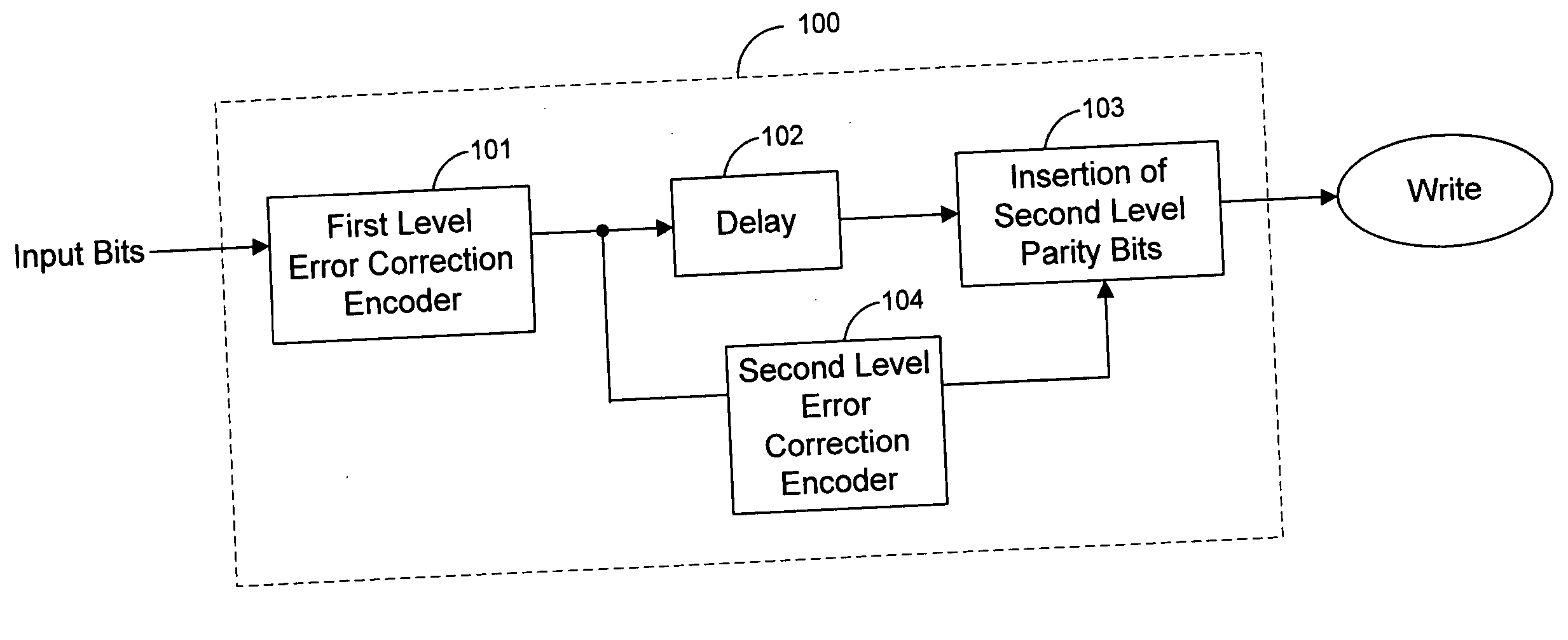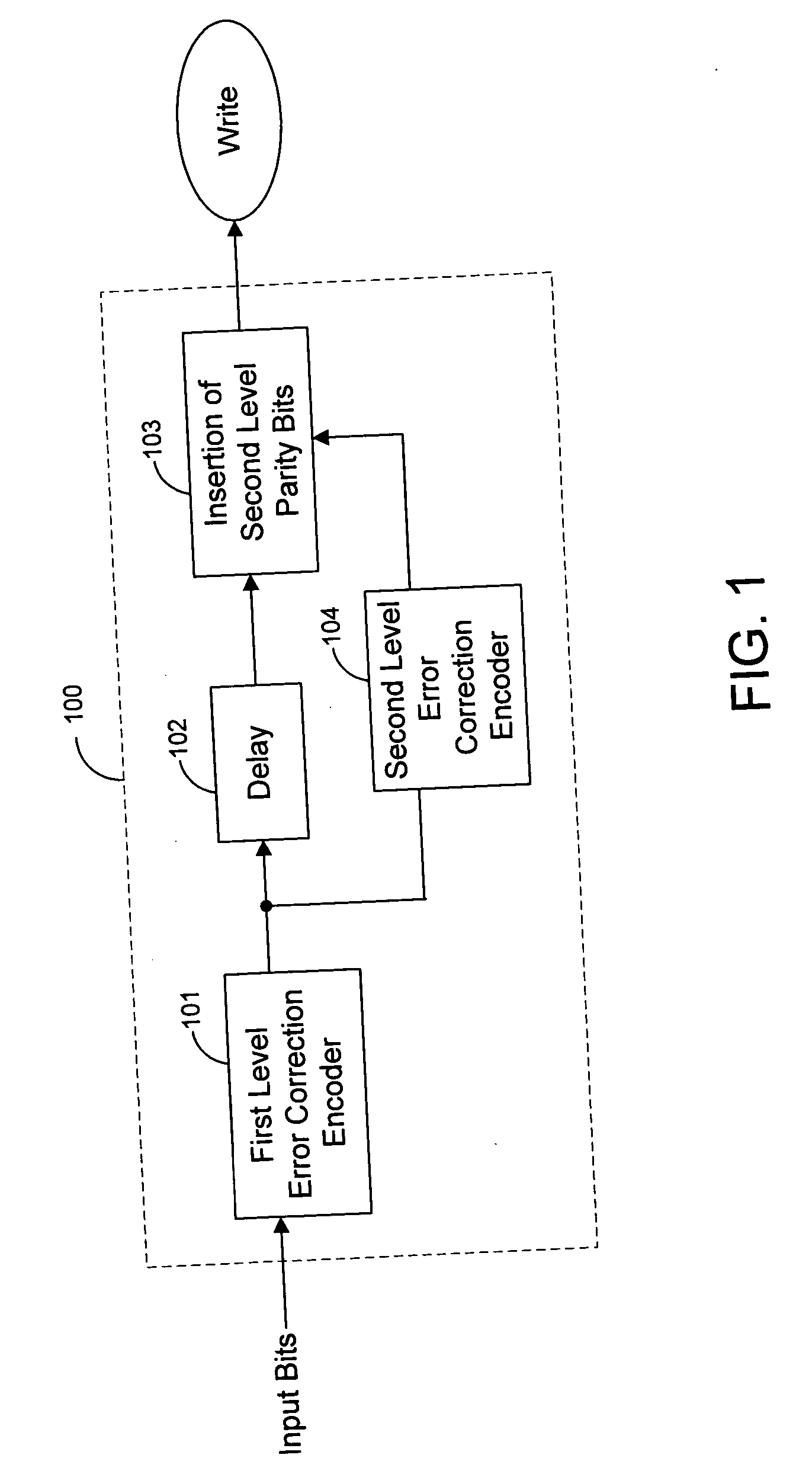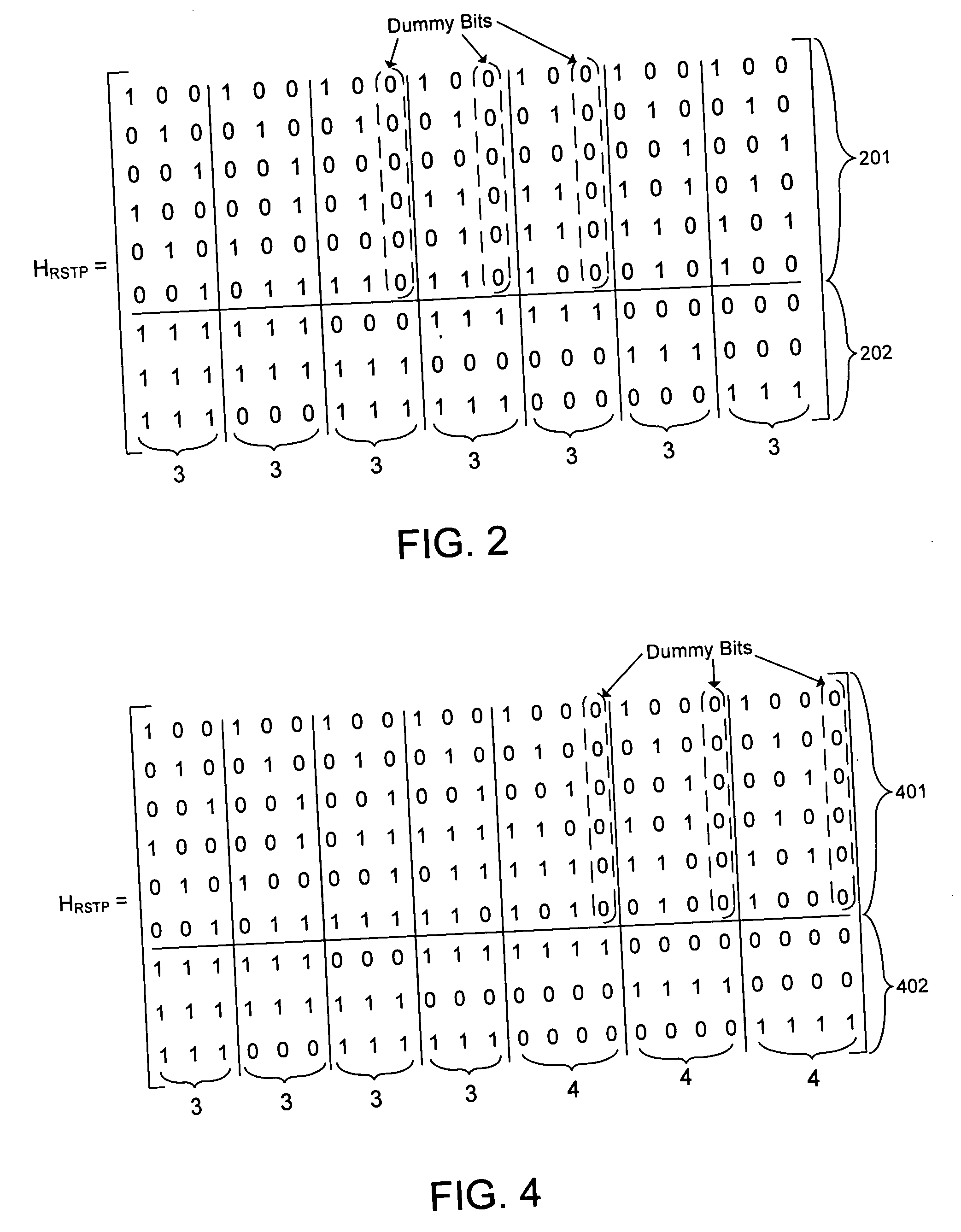Reduced complexity error correction encoding techniques
a technology of error correction and encoding, applied in the field of error correction encoding, can solve the problems of reducing error correction performance of high-rate parity codes, difficult to encode, and inability to achieve simultaneous enforcement of tpp and rs parity rules, etc., and achieve the effect of reducing complexity
- Summary
- Abstract
- Description
- Claims
- Application Information
AI Technical Summary
Benefits of technology
Problems solved by technology
Method used
Image
Examples
Embodiment Construction
[0017] In many data storage or communications systems, two separate codes are combined to form a composite code. The most common method of combining two component codes is simple concatenation. In simple concatenation, the composite codeword consists of a sequence of smaller blocks. Each of the smaller blocks is a codeword of an inner component code. The sequence of blocks is a codeword of an outer component code. Simple concatenation combines two component codes to form a composite code that has stronger error correcting capabilities than either component code. However, the composite code incurs the parity overhead of both component codes.
[0018] Encoding proceeds by first encoding the data blocks using the outer component code by adding outer parity blocks. Then, every block is encoded using the inner component code by adding inner parity bits within each block.
[0019] Decoding proceeds by first decoding each block using the inner component code decoder. The inner component code d...
PUM
 Login to View More
Login to View More Abstract
Description
Claims
Application Information
 Login to View More
Login to View More - R&D
- Intellectual Property
- Life Sciences
- Materials
- Tech Scout
- Unparalleled Data Quality
- Higher Quality Content
- 60% Fewer Hallucinations
Browse by: Latest US Patents, China's latest patents, Technical Efficacy Thesaurus, Application Domain, Technology Topic, Popular Technical Reports.
© 2025 PatSnap. All rights reserved.Legal|Privacy policy|Modern Slavery Act Transparency Statement|Sitemap|About US| Contact US: help@patsnap.com



